Lord Frederick Leighton was an amazing painter from the days of true classic art. He painted a total of 518 artworks. All told, he is considered to be “English Aesthetic, New Sculpture (19th Century British), Olympian Classical Revivalist painter, sculptor, illustrator and writer”. He was Born in 1830 and Died in 1896. He was only 66 years old.
You can see all of his works at the Art Renewal Center here.
Music Lesson
We will start with this very pleasant piece.
Pay attention to the kind and amazing details in this remarkable piece of work. It’s art like this that puts a smile on my face. And that is the truth. First, here is the painting. It’s hard to appreciate all the work and beauty that went into it…

It’s a pretty amazing painting.
Please check out the details up close to really appreciate the art, and the form…
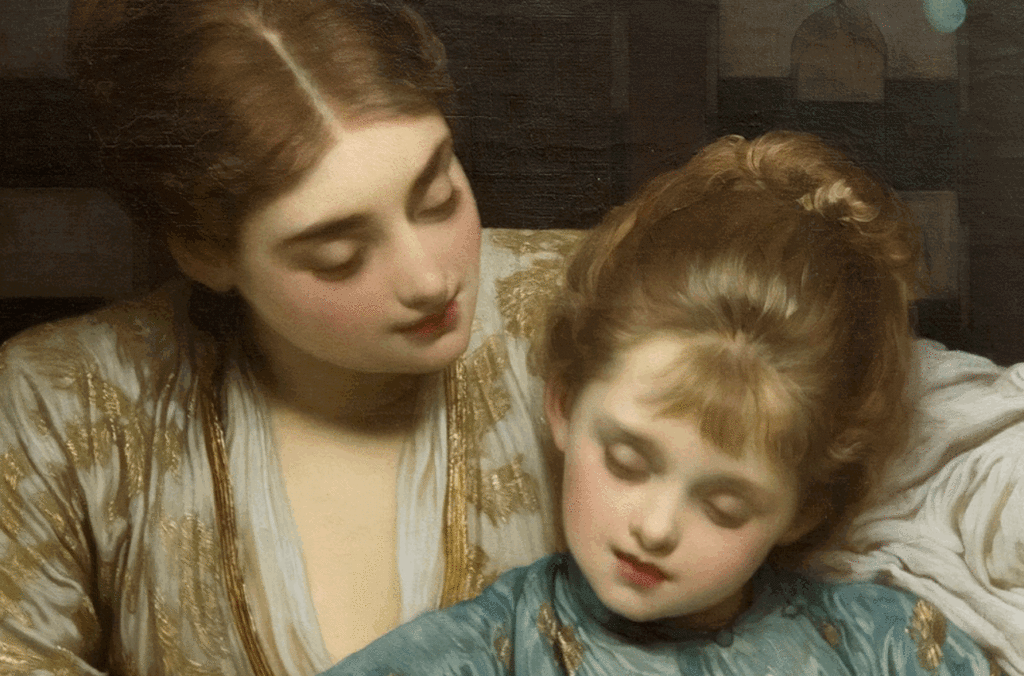
Elijah in the Wilderness
Next up is a story from the Bible.
Elijah (ēlī`jə) or Elias (ēlī`əs) [both: Heb.,=Yahweh is God], fl. c.875 B.C., Hebrew prophet in the reign of King Ahab. He is one of the outstanding figures of the Bible. Elijah's mission was to destroy the worship of foreign gods and to restore exclusive loyalty to God. His zeal brought about a temporary banishment of idolatry (see Jezebel). Incidents in his life include his raising the widow's son from the dead; his contest of faith with the priests of Baal, resulting in his triumph and their death; his being fed by ravens; his experience of the still, small voice on Mt. Horeb (Sinai); and his departure from earth in a chariot of fire enveloped in a whirlwind. His disciple was Elisha. Unlike other great prophets, Elijah and Elisha left no written records. In Jewish tradition, Elijah is the eschatological herald of the Messiah. John the Baptist and Jesus were asked if they were the incarnation of Elijah, who appeared at the Transfiguration. The prophet is prominent in the Qur'an. Mendelssohn composed an oratorio, Elijah. -The Free Dictionary
Translated from Hebrew, the name Elijah means “My God.” The prophet was a devoted follower of the Christian religion in Israel. Using his preaches and working miracles, he faithfully fought for the elimination of idolatry and disgrace. In different religions, including Christianity and Judaism, it is believed that Elijah was taken to Heaven alive, conquering death.
The saint was among the first religious figures worshiped by Orthodox Christians in Russia. A few churches were built to honor his life path. Believers continue to regard Elijah as one of the most revered Biblical personalities.
Many religious people consider the “Elijah in the Wilderness” icon their most beloved miraculous painting.
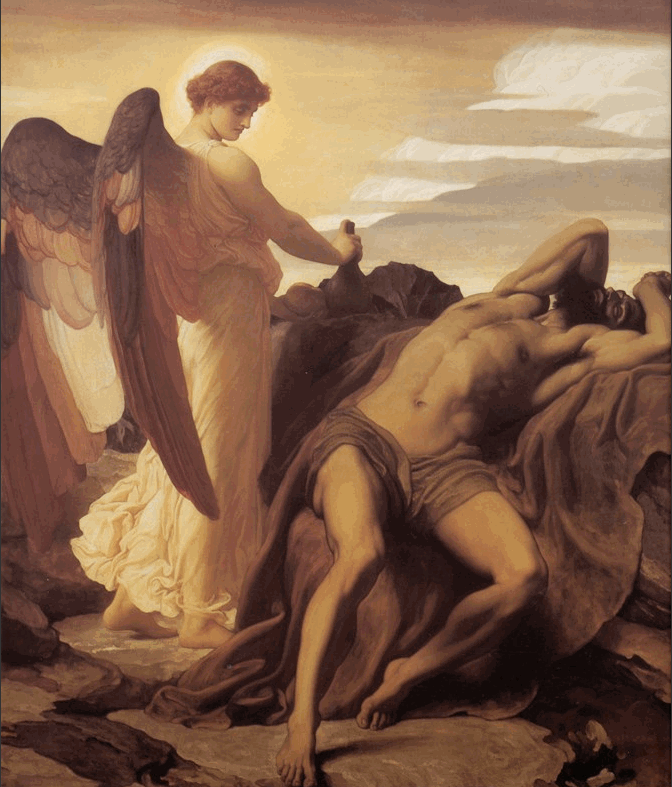
Dante in Exile
Next up…
Poet and politician Dante Alighieri is exiled from Florence, where he served as one of six priors governing the city.
Normally, I don’t give a rat’s ass about politicians. But this fellow was a writer and a poet, and this guy was chased out of his home and “on the lam” while being hunted down by the rival political forces of the day.
And this painting is beautiful.
He wasn’t virginal. He did bad things too.
Dante’s political activities, including the banishing of several rivals, led to his own banishment. It was during this banishment that he wrote his masterpiece, The Divine Comedy, as a virtual wanderer, seeking protection for his family in town after town.
You might think of him as a “blue blood”; a member of the “elite”.
Dante was born to a family with noble ancestry that had fallen in fortunes.
He began writing poetry in his teens and received encouragement from established poets, to whom he sent sonnets as a young man.
He had fallen in love with another fine young lass, and the combination of poetry and love, infatuated forbidden love is a story in itself.
At the young age of nine, Dante first caught a glimpse of Beatrice Portinari, also nine, who would symbolize for him perfect female beauty and spiritual goodness in the coming decades. Despite his fervent devotion to Portinari, who did not seem to return his feelings, Dante became engaged to Gemma Donati in 1277, but the two did not marry until eight years later.
The couple had six sons and a daughter. I am sure that it was a lively household. Six boys! Lord have mercy!
He made his money from his poetry…
About 1293, Dante published a book of prose and poetry called The New Life, followed a few years later by another collection, The Banquet. It wasn’t until his banishment that he began work on his Divine Comedy.
In the poem’s first book, the poet takes a tour through Hell with the poet Virgil as a guide.
Virgil also guides the poet through Purgatory in the second book. The poet’s guide in Paradise, however, is named Beatrice.
The work was written and published in sections between 1308 and 1321. Although Dante called the work simply Comedy, the work became enormously popular, and a deluxe version published in 1555 in Venice bore the title The Divine Comedy.
Dante died of malaria in Ravenna in 1321.
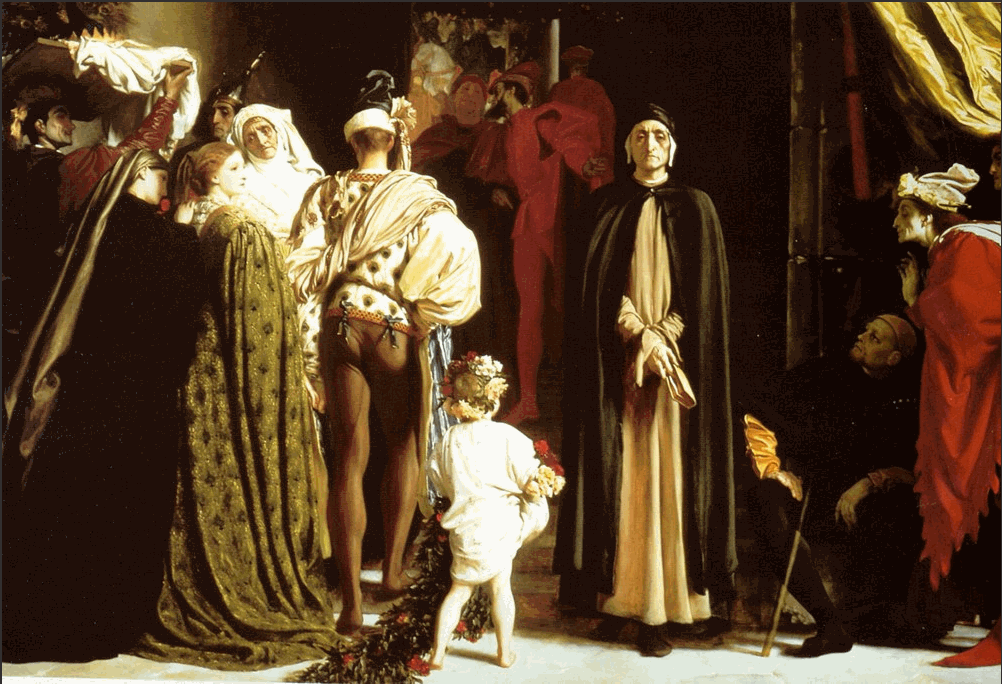
The Painter’s Honeymoon
Another beautiful painting. I particularly love the tender embrace with the hands, and the way the two lovers cheeks press together. From a fellow painters point of view, I am really impressed with the details on the dress and the clothing folds. Just look at it all. Impressive!
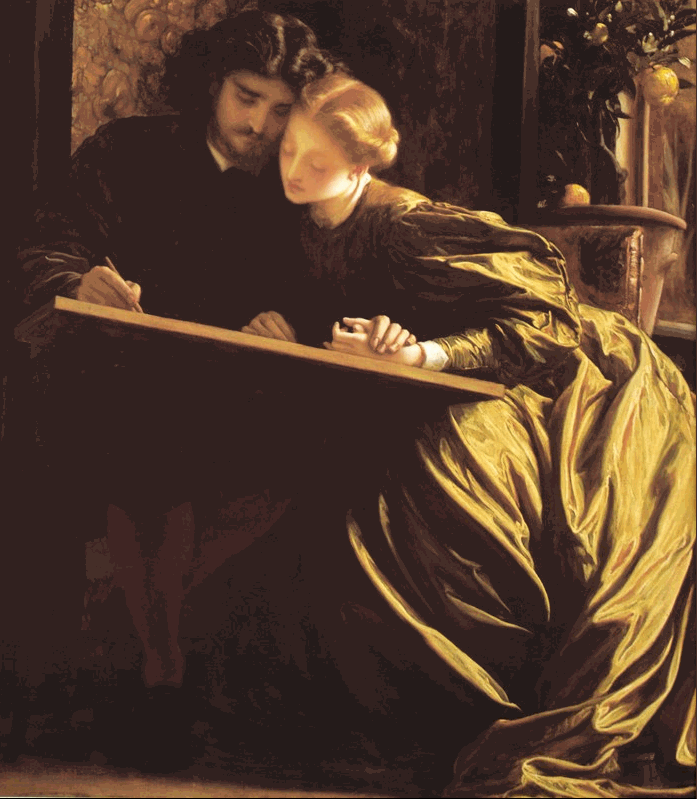
Mother and Child
Another stunning painting.
Take a look at the vase of flowers. What detail and what perfect shading. Look at the tapestry of a crane behind the mother, and the details on her hands. The folds in both of the dress are exquisite. This is a marvelous work. It is stunning and just wonderful.
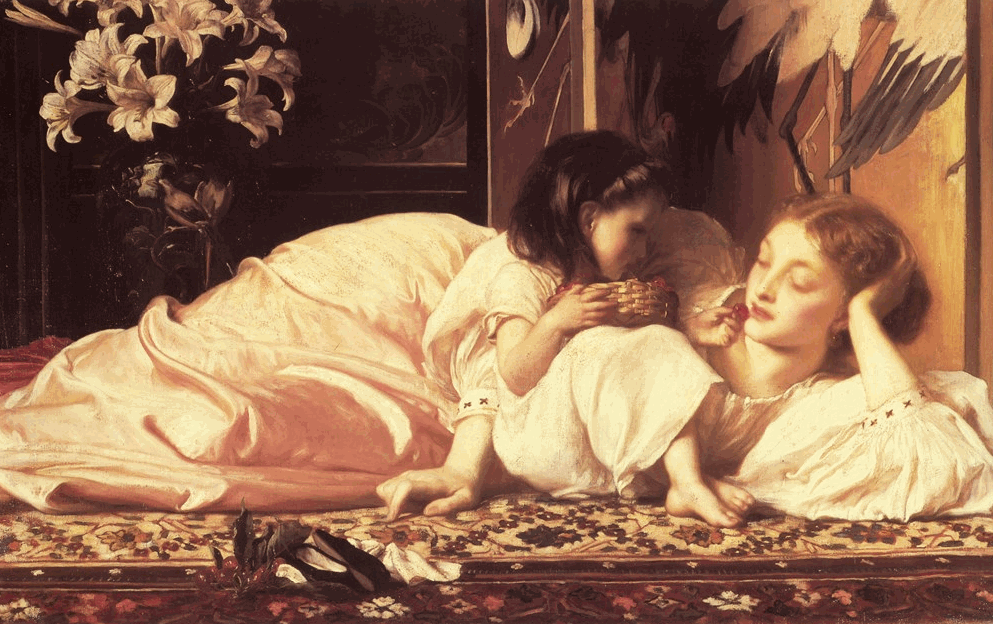
Hercules Wrestling with Death for the Body of Alcestis
Greek history can be very interesting, as long as you can adjust to the names, and the cultural differences. Here is a great write up about the story of Alcestis and our Hero Hercules…
The following is from the ancient network...
For the ancient Greeks, the quality of arete (personal excellence) and the concept of eusebia (social duty) were most important.
Aristotle discusses both of these at length in his Nichomachean Ethics and relates arete to eudaimonia – translated as “happiness” but actually meaning “to be possessed of a good spirit”.
To have arete, Aristotle claims, one must associate oneself with those striving for the same goal.
I really can agree with that. Can't you?
If one wanted to become an excellent musician, one should associate oneself with excellent musicians and the same if one wished to be a star athlete or carpenter or doctor.
The Greek concept of eusebia is often translated into English as “piety” (as, for example, in Plato’s dialogue of the Euthyphro), but the concept is actually much closer to “duty”, particularly social duty.
Eusebia dictated how one interacted with one’s husband, wife, parents, servants, and those of higher and lower classes. Eusebia also touched on how one understood the gods (though not on how one interacted with the gods, which would be the concept of housia, much closer to “piety”).
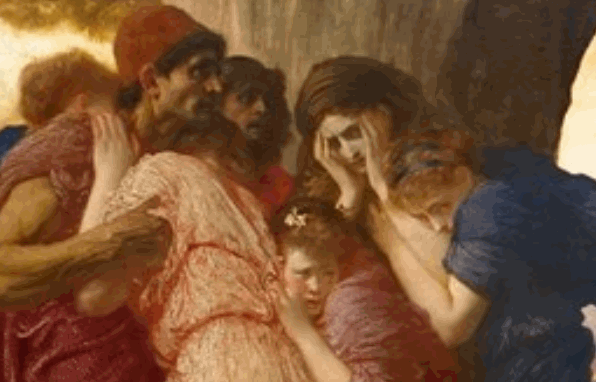
The gods, and especially the all-powerful Fates, controlled and directed the lives of human beings and one needed to accept that fact and live one’s life accordingly. If one suffered some tragic loss or financial set-back, it was the will of the gods, or the Fates whom not even the gods could sway, and by accepting this as the order of the universe, one could better accept such loss.
The stories the Greeks told – which today are referred to as their myths – played a part in understanding arete and eusebia in that they illustrated for the listeners these virtues of Greek civilization.
In hearing how heroes and kings and even gods behaved, one was provided with a model for one’s own behavior. Among the many myths the Greeks told, one that exemplifies the virtues of personal excellence and social duty is the story of Hercules and the Queen Alcestis. There are two versions of the myth, one in which Hercules plays no part at all, but thanks to the playwright Euripides (480-406 BCE), and his play Alcestis, the version featuring Hercules is the better known.
The Story of Alcestis & Admetus
Both versions begin the same way and emphasize the importance of loyalty, love, and kindness in informing one’s social duty.
Once upon a time, as the story goes, there lived a gentle king named Admetus who ruled over a small kingdom in Thessaly. He knew each of his subjects by name and so, one night when a stranger appeared at his door begging for food, he knew the man must be from a foreign land but welcomed him into his home anyway.
He fed and clothed the stranger and asked him his name but the man would give no answer other than to ask Admetus if he could be the king’s slave. Admetus had no need for another slave but, recognizing the man was in distress, took him on as shepherd for his flocks.
Apollo thanked Admetus for his kindness and offered him any gift he desired.
The stranger stayed with Admetus for a year and a day and then revealed himself as the god Apollo. He had been sent to earth by Zeus as punishment and could not return to the realm of the gods until he had served a mortal as a slave for a year.
Apollo thanked Admetus for his kindness and offered him any gift he desired; but Admetus said he had all he needed and required nothing for what he had done. Apollo told him he would return to help him whenever he needed anything in the future and then vanished.
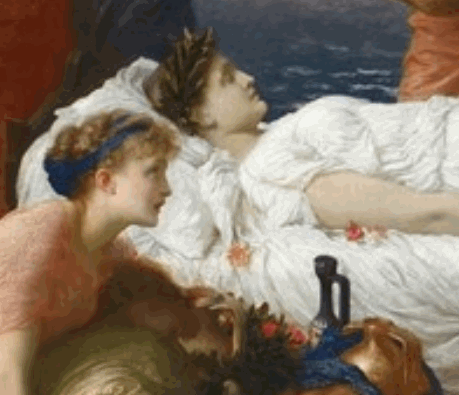
Not long after this, Admetus fell in love with the princess Alcestis of the neighboring city of Iolcus. Alcestis was kind and beautiful and had many suitors but only wanted to marry Admetus.
Her father Pelias, however, refused Admetus’ request for her hand and stipulated that the only way he would give his daughter to him would be if he rode into the city in a chariot pulled by a lion and a wild boar. Admetus was despondent over this situation until he remembered the promise of Apollo.
He called on the god who appeared, wrestled a lion and a boar into submission, and yoked them to a golden chariot. Admetus then drove the chariot to Iolcus and Pelias had no choice but to give him Alcestis in marriage.
Apollo was among the wedding guests and gave Admetus an unusual gift: a kind of immortality. Apollo told them how he made a deal with the Fates who governed all so that, if ever Admetus became sick to the point of death, he might be well again if someone else would volunteer to die in his place.
The couple lived happily together for many years and their court was famous for their lavish parties but then, one day, Admetus fell ill and the doctors said he would not recover. The people of his court remembered the gift of Apollo and each felt that someone should give their life to save so kind and good a king; but no one wanted to do so themselves. Admetus’ parents were old and so it was thought that one of them would volunteer but, even though they had only a short time left on the earth, they refused to surrender it. None of the court, nor any of Admetus’ family, nor any of his subjects would take the king’s place on his death bed – but Alcestis did.
At this point the two stories diverge.
In the older version, Admetus wakes on his bed feeling better and runs to tell Alcestis he is cured – only to find it was she who took his place. He then sits by her body in mourning and refuses to eat or drink for days. As this is going on, Alcestis’ spirit is led down into the underworld by Thanatos (death) and presented to Queen Persephone.
Persephone asks who this soul is who has come willingly to her realm and Thanatos explains to her the situation. Persephone is so moved by the story of Alcestis’ love and devotion to her husband that she orders Thanatos to return the queen to life. Alcestis and Admetus then live happily ever after.
Hercules & Alcestis
In the version popularized by Euripides in his play Alcestis (written c. 438 BCE), however, Hercules plays the pivotal role in bringing Alcestis back from the dead.
In this version, as in the first, no one will take Admetus’ place in death except for Alcestis.
Admetus is informed of this, accepts her sacrifice, and begins to recover as his queen grows weaker. The entire city falls into mourning for Alcestis as she hovers on the brink between life and death.
Admetus stays by her bedside and she requests that, in return for her sacrifice, he should never marry again and so keep her memory alive. Admetus agrees to this and also swears he will never throw another of their parties again nor allow any merrymaking in the palace once she has gone; after these promises are made, Alcestis dies.
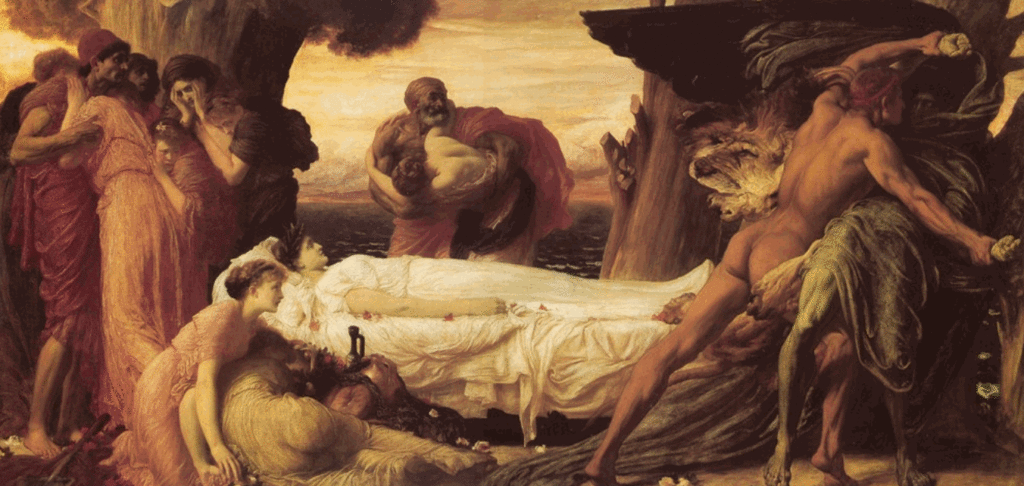
Hercules was an old friend of the couple and he arrives at the court knowing nothing of Alcestis’ death.
Admetus, not wishing to spoil his friend’s arrival, instructs the servants to say nothing about what has transpired and to treat Hercules to the kind of party the court was known for. The servants, however, are still upset over the loss of the queen and Hercules notices that they are not serving him and his entourage properly.
After a number of drinks, he begins to insult them and ask for the king and queen to come remedy this poor performance on the servant’s part, when one of the maidservants breaks down and tells him what has recently happened.
Hercules is mortified by his behavior and so travels to the underworld where Thanatos is leading Alcestis’ spirit toward Persephone’s realm. He wrestles death and frees the queen, bringing her back up into the light of day.
Hercules then leads her to where Admetus is just returning from her funeral. He tells the king that he must depart on other business and asks him to take care of this lady while he is gone.
Admetus refuses because he promised Alcestis that he would never marry again, and it would be unseemly for this woman to reside at the court so soon after his wife’s death.
Hercules insists, however, and places Alcestis’ hand in Admetus’. Admetus lifts the woman’s veil and finds it is Alcestis returned from the dead. Hercules tells him that she will not be able to speak for three days, and will remain pale and shadow-like, until she is purified, after which time she will become as she always was.
Euripides’ play ends there while other versions of the myth continue the story further and conclude with everything then happening as Hercules has said, and Alcestis and Admetus living a long and happy life together until Thanatos returns and takes them both away together.
Personal Excellence & Social Duty in the Tales
The characters of Admetus, Alcestis, and Hercules, all at some point in the story exemplify – or fail to meet – the values of personal excellence and social duty.
Admetus exemplifies the value of hospitality (which would be considered part of social duty) in taking in the stranger at the beginning of the story and would fall short of that value when he allows festivities in his home directly after his wife’s death.
These two incidents are directly related to each other, however, in that, when Hercules arrives at his home, Admetus is under a social obligation to entertain his friend according to the custom he is used to.
Even though Hercules would have certainly understood the house being in mourning after Alcestis’ death and is embarrassed when he finds out he has been drinking and carrying on in the palace so soon after a death, Admetus values social obligation to such a degree that he fails to keep his promise to his wife – and so fails in arete and, because he neglected the promise he had made to Alcestis, eusebia as well.
Alcestis epitomizes the loyal, loving wife who is so devoted to her husband that she would literally die for him.
In this, she exemplifies both arete and eusebia.
A modern-day reader may feel uncomfortable with the version of the story in which Admetus accepts his wife’s sacrifice, but this would have been completely understandable to an ancient Greek audience.
The husband, especially the husband who was a king, was responsible for the well-being of more people than the wife or queen.
Alcestis’ virtue in taking Admetus’ place is admirable in that she not only sacrifices herself for the man she loves but also for the people who depended upon Admetus for their continued well-being.
Her personal excellence is illustrated in her willingness to die for the good of others and the value of eusebia through her understanding of the social order and how she could do her best to maintain it. In all ways, Alcestis stands as a model for proper behavior.
Hercules exemplifies the values of arete and eusebia and provides the story with its heroic climax.
In his drunken behavior in the house of mourning, he fails in both, of course, and yet he cannot be blamed for this in that he was not told of Alcestis’ death.
The more important – and interesting – breach in social conduct is his wrestling Thanatos for Alcestis’ soul.
The Fates were all powerful to the ancient Greeks, and Apollo had made a deal with them for Admetus’ continued life.
The Fates had kept their part of the deal and restored Admetus to life, once someone else agreed to take his place. By wrestling Alcestis’ soul away from death, Hercules was breaking the deal.
If one made a deal with the supernatural powers, one was expected to honor that deal. This can be most clearly seen in the story of Orpheus and Eurydice, where Orpheus makes the deal with Hades that he will not look back on his way up from the underworld but then breaks that deal, and so loses Eurydice.
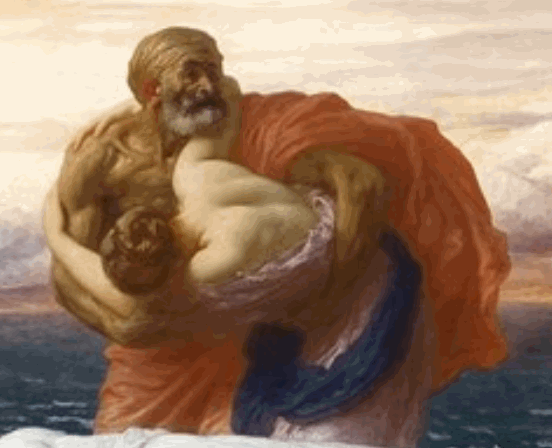
Unlike that story, at no point in any version of the Alcestis story is Hercules portrayed in any way but admirably for rescuing the queen from death. Further, by placing himself in danger by physically wrestling death, Hercules embodies the personal excellence of courage and heroism and, by doing so, he restores order to the kingdom by bringing the queen back to her king and rewarding the selflessness of Alcestis.
The story operates on many levels, of course, which is why it has resonated so strongly with audiences for over 2,000 years but, on the simplest level, it would have transmitted the values of the society to those who heard it sung or recited or watched it performed.
How one balances one’s personal excellence with one’s place in society and, further, in the universe, would have been illustrated through Hercules and his confrontation with Thanatos.
In defeating death, Hercules is shown as the ultimate hero who defies even the will of the Fates in order to do what he feels is right.
In the version of the story where Persephone sends Alcestis back to life, it is eusebia which is emphasized through Alcestis’ selfless gesture while, in the Hercules’ version, it is arete through Hercules’ decision to fight with death, and yet both versions highlight the importance of both of these values to ancient Greek society.
The popularity of the Hercules’ version indicates that, while the ancient audience would have understood the value of social duty and conduct, they also valued personal achievement and, of course, heroism, which is the embodiment of personal excellence.
Scholars have long been divided on the Alcestis play by Euripides regarding why he wrote it and even what he was trying to say in it but, perhaps, it was as simple as promoting the concept that one should do what one feels one must to right a wrong no matter what societal rules may stand in the way and, in doing so, one can actually restore order instead of upsetting balance.
Cymon and Iphigenia
Iphigenia was the daughter of Agamemnon and Clytemnestra in Greek mythology. While the Greek army was preparing to set sail for Troy during the Trojan War, Agamemnon caused the anger of the goddess Artemis, because he killed a sacred deer. So, she decided to stop all winds, and the ships would not be able to sail. The seer Calchas realised what the problem was, and informed Agamemnon that to appease the goddess, Agamemnon had to sacrifice Iphigenia to her. Reluctant at first, Agamemnon was forced to agree in the end. He lied to his daughter and his wife by saying that Iphigenia was to marry Achillles before they left. The mother and daughter happily went to the port of Aulis, only to find out the horrible truth. Achilles, unaware that his name was used in a lie, tried to prevent the sacrifice, but Iphigenia utterly decided to sacrifice herself in honour and of her own volition. The most popular version of what happened afterwards is that on the moment of the sacrifice, the goddess Artemis substituted Iphigenia for a deer, but Calchas who was the only witness remained silent. Iphigenia was then brought by Artemis to the city of Tauris where she became the goddess' priestess. Years later, after Orestes, Iphigenia's brother, had killed his mother and her lover Aegisthus, he was hunted by the Erinyes for committing matricide. He was then advised to go to Tauris, take the carved wooden image of Artemis and bring it back to Athens. In Tauris, where he went with his friend Pylades, he was taken captive by the locals, and the two men were brought before Iphigenia. Although initially the two siblings did not recognise each other, they finally realised the truth and managed to escape the city. They then returned to Greece, where Iphigenia continued to serve Artemis as a priestess in her temple. -Greek Mythology
According to a story published in 1897, Leighton spent six months searching throughout Europe for a model to match his imagined ideal of Iphigenia for his intended portrayal of Cymon and Iphigenia.
He saw a young actress, Dorothy Dene, in a theater in London and his search was over. Possessing a classical Greek style beauty, Dene had golden wavy hair with excellent skin texture and coloration on her face; she was taller than average with graceful arms and legs together with an “exquisitely molded bust”.
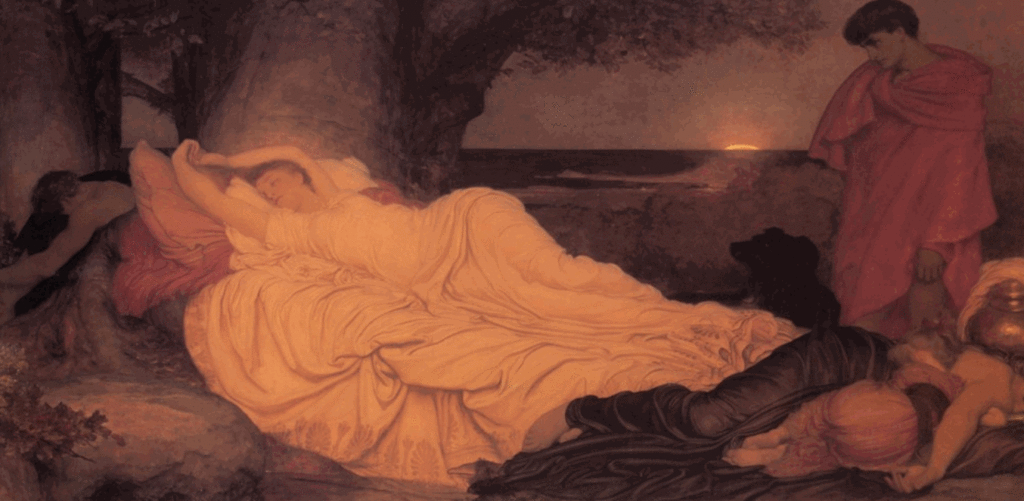
She appeared in several other of Leighton’s works, including Greek Girls Playing Ball and Summer Moon.
Lena, one of Dene’s younger sisters, appears in the painting as the child slave.
Other paintings by Leighton featuring Dene are: The Bath of Psyche, Clytie, Perseus and Andromeda, Solitude, The Return of Persephone and The Vestal.
The painting took eight months to complete; a succession of line drawings were done first as Leighton tried to capture the position he wanted for the central figure, around 56 – including several of foliage and other elements of the piece – of these are known to exist.
The English art critic Peter Nahum describes the painting as “central among Leighton’s later works”, an opinion Mrs Russell Barrington considered was shared by Leighton.
Leighton’s painting Idyll dating from a few years earlier has some similar elements but lacks the complexities of Cymon and Iphigenia. The two compositions each highlight the difference between the fair complexion of a female with a dark skinned male; both feature a full-length woman reclining beneath a tree and similar lighting techniques are used.
Cimabue’s Celebrated Madonna
Lord Frederick Leighton would paint these amazing enormous paintings. In it would be crammed such detail that you could spend hours admiring every little morsel. Such as in this work.
This painting celebrates the Madonna painted by Cimabue. It is known as the “Madonna in Majesty.”
The picture originally stood on the high altar of Santa Trinità church in Florence. The iconography is frequent in medieval painting and represents the Madonna enthroned with Child and angels, a pattern commonly said Maestà as shows the Virgin as Queen of Paradise. In the lower part are four biblical figures, symbolizing foundations of Christ's kingdom: the prophets Jeremiah and Isaiah under lateral arches, Abraham and King David under the chair of the throne. This Madonna, which is similar in structure to the same artist's Madonna at the Louvre and Duccio's Ruccelai Madonna, still shows the influence of the Byzantine tradition. There is, however, an unprecedented tension in the profiles and in the attempt to create spatial depth, which is rendered by superimposing the figures and in the concave structure at the base of the throne behind the figures of the prophets. The architectural structure of the throne becomes a sort of robust spatial scheme which creates a three-dimensional effect, while the edges of the painting seem to compress and hold in the bodies. There is an intense vitality in the figures and the same dramatic force that characterizes all Cimabue's work. -Web Gallery of Art
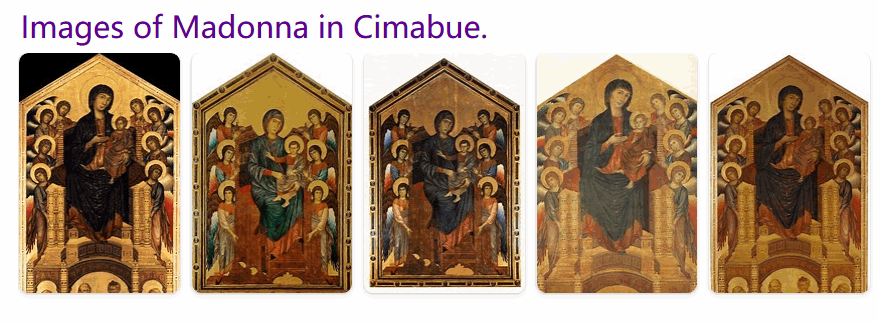
Here, we have Lord Frederick Leighton painting a celebration of that painting in public display for all to admire. The emotions on the people’s face and the scenes depicted are both fascinating and curious at the same time.
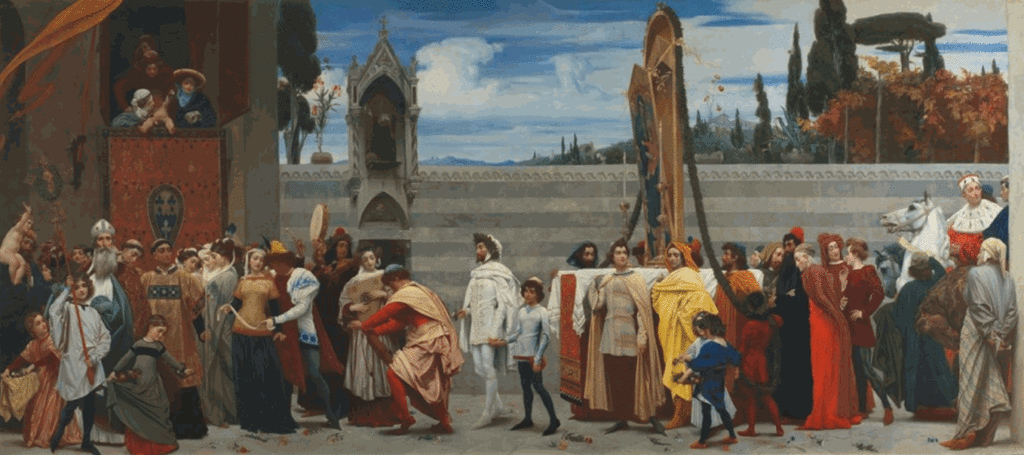
Faticida
This is a lovely painting. I truly enjoy the art and the skill that went into painting it.
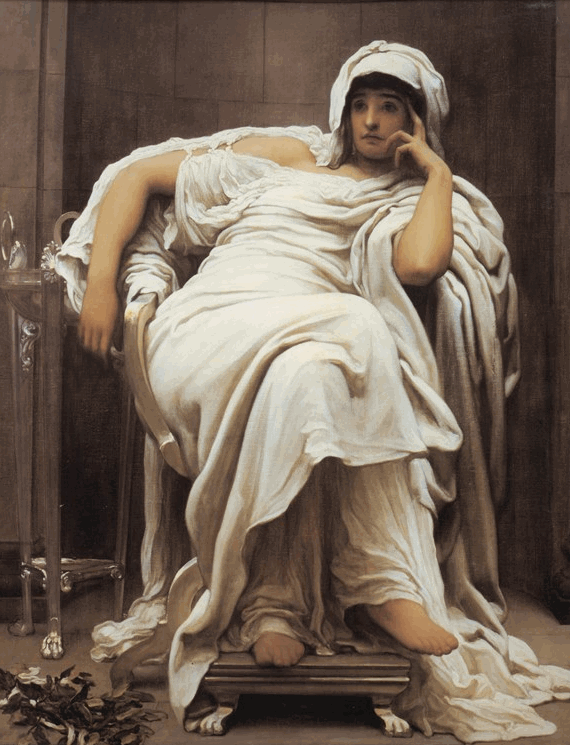
Others, not so enthralled, have used this image to profit from it, or to make some kind of contemporaneous statement. As an example, here is a work by Alexey Kondakov titled “Kyiv, bus station at “Nauki Ave.” , 2015″.
Nice and progressive…

The Spirit of the Summit
One of the things about art by “masters” is that they are able to convey emotions within certain specific scenarios. If you have had a very private event, one that evoked the same kind of emotions, then the art would resonate with your.
I love the woman’s hand, and the upturned face, and the details of the folds on the dress. But that is just me. This painting speaks to me…

Idyll
Another fine painting.

A Condottiere
Condottiere, leader of a band of mercenaries engaged to fight in numerous wars among the Italian states from the mid-14th to the 16th century. The name was derived from the condotta, or “contract,” by which the condottieri put themselves in the service of a city or of a lord. -Condottiere | Italian history | Britannica
I cannot help but think that this painting was part of an inspiration for a movie made in 1972…
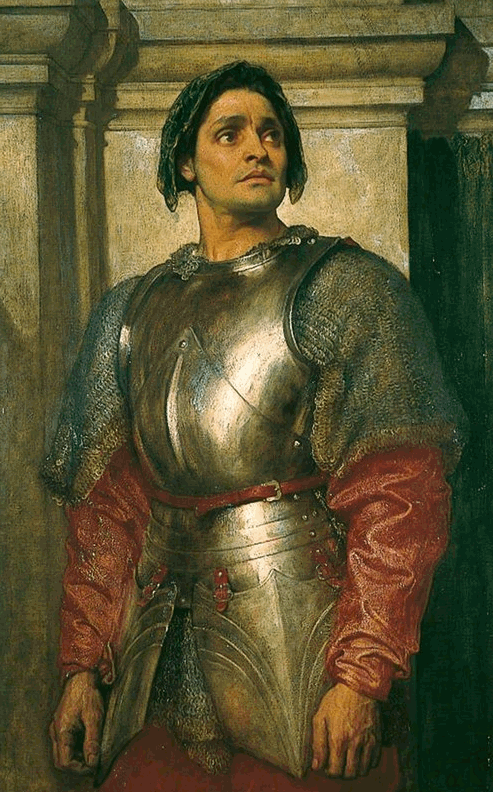
He reminds me of Aguirre, the Wrath of God (1972).
Aguirre, The Wrath Of God (Werner Herzog, 1972) Full time force of nature and part time filmmaker Werner Herzog has a career filled with eerily atmospheric masterpieces of almost every style, genre, and form.
Yet, if ever we find ourselves in some sort of movie apocalypse and only one Herzog movie can be saved, that title must be Aguirre, The Wrath Of God.
Herzog’s career was up and running by the time he descended into the jungle to make this his first genuine masterpiece and when he emerged on a raft surrounded by monkeys he was a legend.
It’s an encapsulation of everything that the filmmaker does well (including a collection of insane and possibly fictionalized behind the scenes stories) and also boasts quite possibly the finest performance Klaus Kinski’s career.
Aguirre is a brutal, thoughtful, poetic, and terrifying work of art that never possibly could have existed unless Herzog decided to point a camera at his twisted imagination. The director might have equaled the remarkable achievement of Aguirre several times in his career, but he never topped it.

The story is deceptively simple.
It follows Kinski’s Spanish conquistador Aguirre who recently triumphed with his army in battle and has now been ordered to trek through the jungle in search of the mythical city of El Dorado and the untold riches therein.
The journey is treacherous from the start, with an unforgiving jungle offering little more than immense physical and philosophical difficulties challenging the journey.
Eventually a death toll mounts and Aguirre’s mind becomes as lost as his quest.

That’s pretty much it and yet the film is as complex thematically as it is simplistic in narrative.
Herzog was clearly influenced by Joseph Conrad’s Heart Of Darkness and Aguirre would quickly inspire Francis Ford Coppola to make Apocalypse Now. It’s hard to say which work explores those shared themes better, but given that one of the major concepts of all three is an exploration of the cold brutality of nature, you can assume that Herzog nailed that one.
After all, give Herzog 30 seconds and a microphone and he’ll be sure to let you know how horrendous nature can be.
Like Fitzcarraldo, the most immediately striking aspect of Aguirre, The Wrath Of God is the physical brutality of the production.
From the astounding opening shots of an army wiggling down the edge of a mountain, it’s clear that this production was as dangerous as the journey it staged. Filth, grit, pain, and exhaustion radiates from the screen and at times it blurs the lines between fiction and documentary.
The second most striking aspect is Klaus Kinski’s devastating performance.
Forever caught between stoic silence and volcanic explosion, Kinski is a wild and unpredictable beast at the center of Werzog very deliberately paced and hypnotic film. He’s a constant element of danger and a physical embodiment of insanity that’s impossible to take your eyes off of (which was important given that mood and spectacle easily could have dominated the picture).
Beyond the surface dangers and central performance, the movie is filled with layers of meaning and moments of visual poetry that Herzog never fully explains.
It’s a mystery of a movie to be experienced and interpreted in many different ways. At times it’s terrifyingly real, at other times is archly stylized. Some scenes are quietly contemplative, others viscerally thrilling.
The project was a bold announcement of a new filmmaking voice from Werner Herzog and has lost none of its power in the decades that followed. Love or loath it, Aguirre: Wrath Of God is one of those movies that everyone needs to see to even consider themselves a cinephile.
The rich colors of the jungle and filthy details of the period costumes pop off the screen like never before. The production might have been rough and tumble, but the beauty of Herzog’s images here have rarely been equaled.
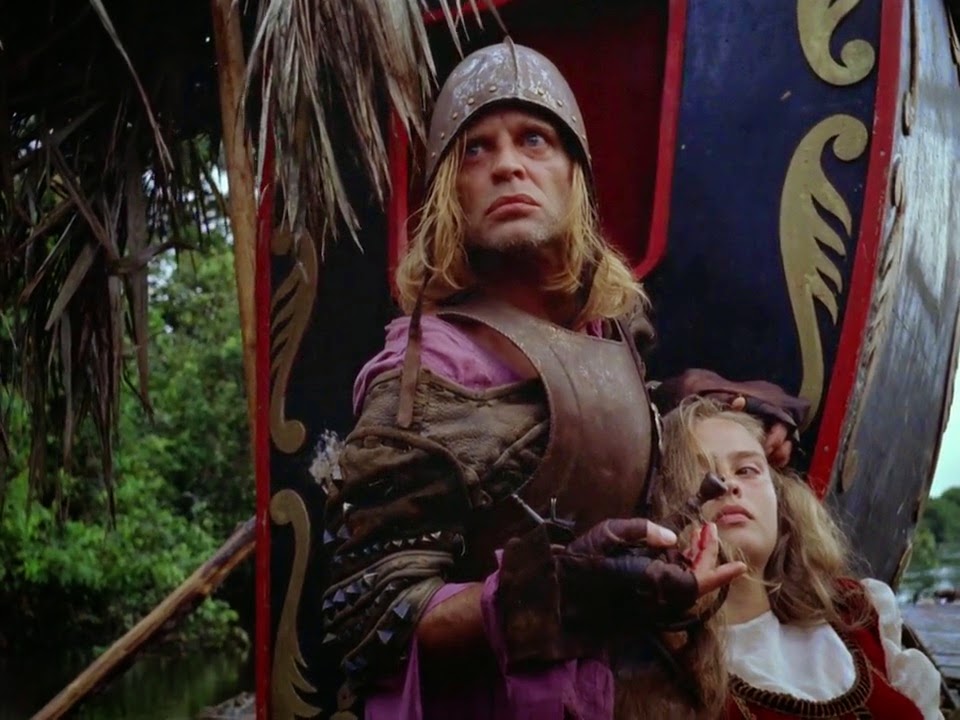
The Hit
Most people have never heard of this man, and he is rarely mentioned in art schools. And that, is a shame. For all that most people can read about him is found in obscure Wikipedia listings.
Frederic Leighton, 1st Baron Leighton, (3 December 1830 – 25 January 1896), known as Sir Frederic Leighton between 1878 and 1896, was a British painter, draughtsman and sculptor. His works depicted historical, biblical, and classical subject matter in an academic style. His paintings were enormously popular, and expensive, during his lifetime, but fell out of critical favour for many decades in the early 20th century. Leighton was the bearer of the shortest-lived peerage in history; after only one day his hereditary peerage became extinct upon his death. -Frederic, Lord Leighton 1830–1896 | Tate
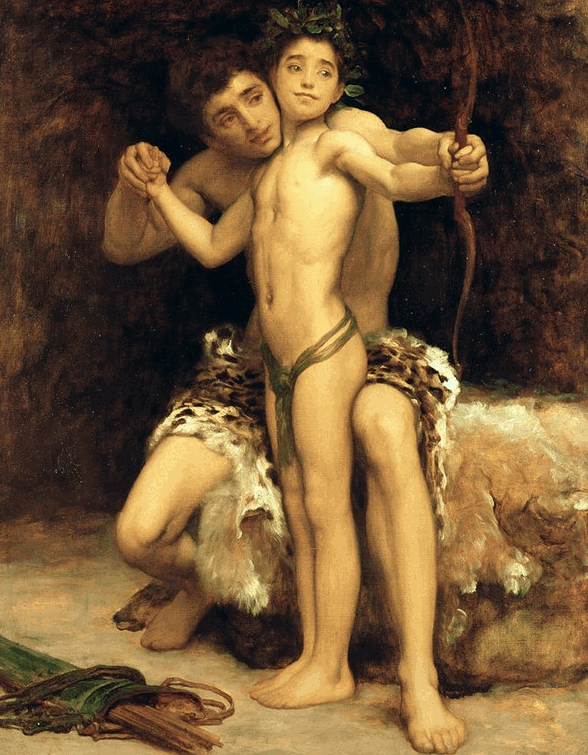
Modern Art
Most lovers of “modern art”, raise their noses to this kind of art. They say that it is old, tired, and out of date. That instead, one needs to be “progressive” and “enlightened” to see and appreciate the art with no form.
Something like this…

And…

And apparently this Mark Rothko is considered to be an acclaimed genus in the modern, progressive art world. Here’s another one of his “breathtaking” and “astounding” works of art.

Modern art is no longer about art for the sake of beauty and appreciation.
Modern art is just a convenient way to launder money, as it is difficult to put a price tag on art. Thus in the modern art world, money is the king, and emotions, passion and beauty have no place in the modern art world.
- The link between art and money laundering
- 20 Celebrities Who Are Huge Art Collectors
- Modern art was CIA ‘weapon’ | The Independent
- Modern art was CIA ‘weapon’, by Frances Stonor Saunders
Do you want more?
I have more posts in my Art Index here…
ARTArticles & Links
You’ll not find any big banners or popups here talking about cookies and privacy notices. There are no ads on this site (aside from the hosting ads – a necessary evil). Functionally and fundamentally, I just don’t make money off of this blog. It is NOT monetized. Finally, I don’t track you because I just don’t care to.
To go to the MAIN Index;
Master Index.
- You can start reading the articles by going HERE.
- You can visit the Index Page HERE to explore by article subject.
- You can also ask the author some questions. You can go HERE .
- You can find out more about the author HERE.
- If you have concerns or complaints, you can go HERE.
- If you want to make a donation, you can go HERE.
Please kindly help me out in this effort. There is a lot of effort that goes into this disclosure. I could use all the financial support that anyone could provide. Thank you very much.

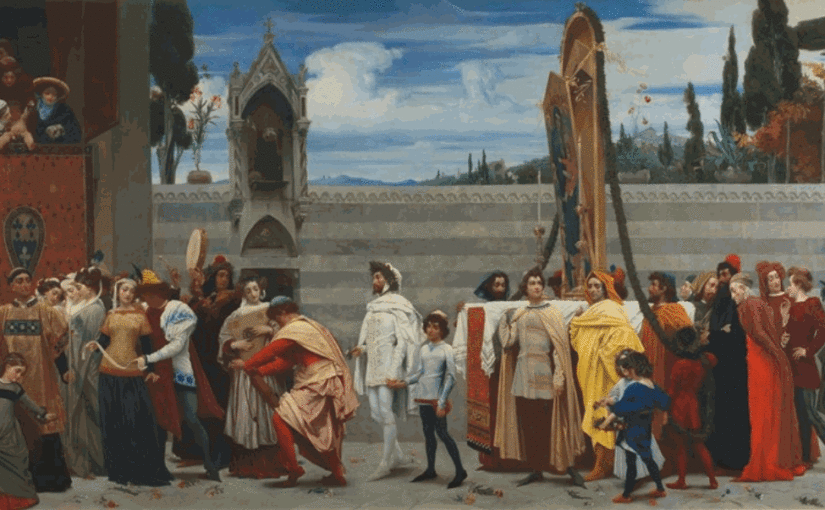

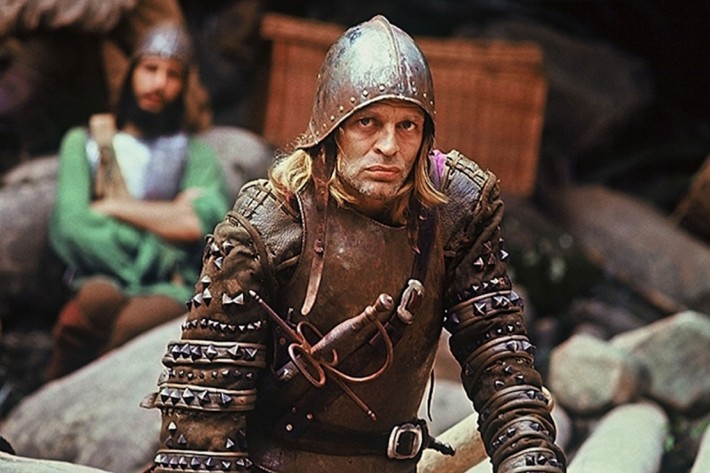
I always get an education when I peruse these pages. I really enjoyed this post, MM thank you.